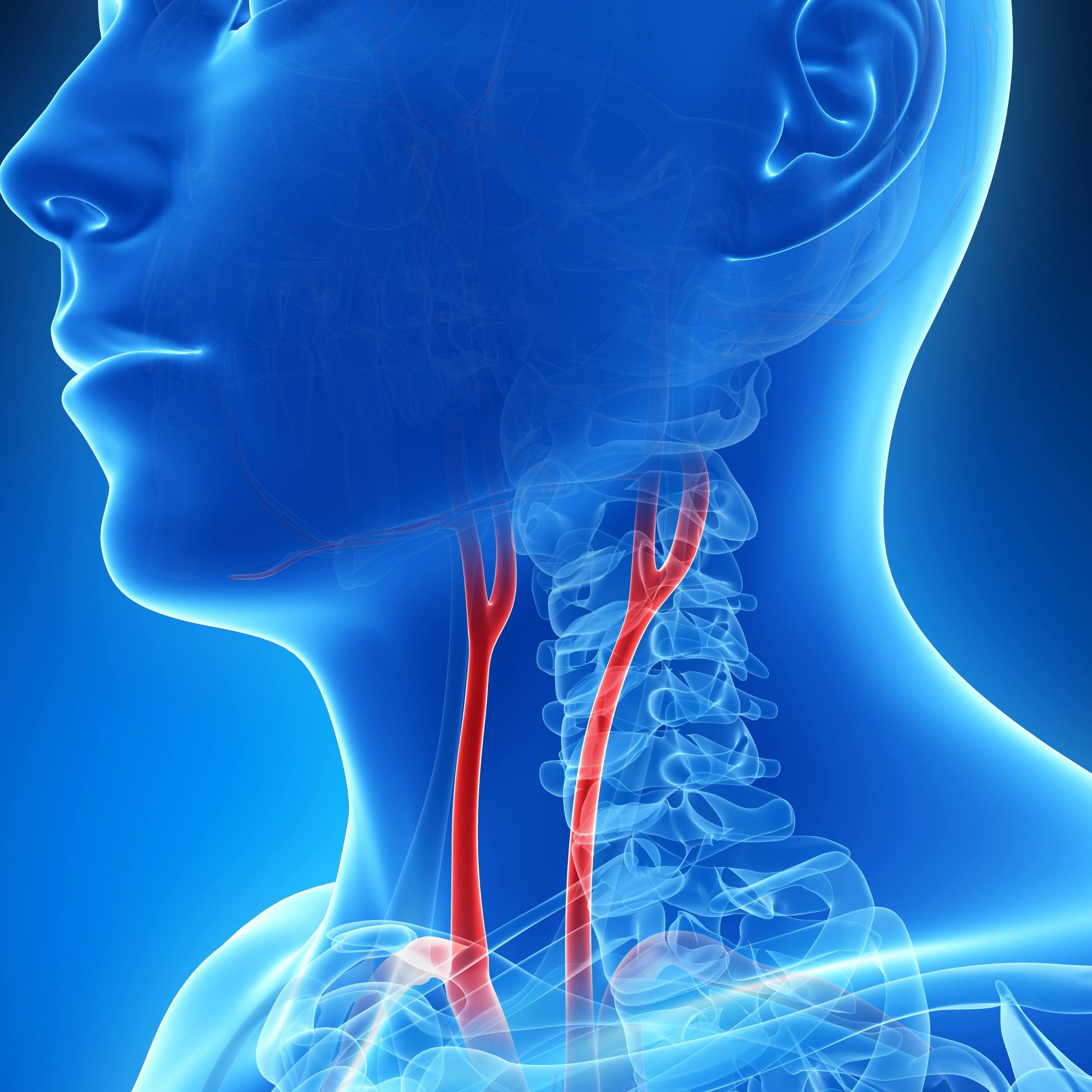-
Mayo Clinic Proceedings: In the Limelight, May 2021
Mayo Clinic publishes two peer-reviewed journals, accepting original research and related content from investigators around the world. Advancing the Science shares stories about research published in Mayo Clinic Proceedings, its sister journal, and many other English-language journals. In order to gain more visibility for all the research covered by Mayo's premier journal, we are going to reprint 'In The Limelight' each month. Written by Editor in Chief Karl Nath, M.B., Ch.B., it highlights several articles from that month's issue.
This month’s feature highlights four articles, three of which focus on COVID-19, that appear in the current issue of Mayo Clinic Proceedings. These articles are also featured on the Mayo Clinic Proceedings’ YouTube Channel.
A Paradigm and Program for Administering Anti-Spike Monoclonal Antibodies to Eligible Patients With COVID-19
Infection with SARS-CoV-2 leads to polymorphic clinical presentations that encompass a spectrum ranging from an entirely asymptomatic state to a severe, life-threatening illness. The former is managed by quarantine while the latter necessitates care in the intensive care unit with therapies that may include remdesivir and dexamethasone. For individuals with mild to moderate disease and concomitant risk factors for disease escalation and the need for hospitalization, the Food and Drug Administration (FDA), via emergency use authorization (EUA), approved the use of several spike-neutralizing monoclonal antibodies that may be intravenously administered in the outpatient setting. Such authorization for use by the FDA was based on encouraging data from early phase clinical trials demonstrating that the use of these antibodies, as compared with placebo, reduced viral load and the risk for disease progression.
In the present issue of Mayo Clinic Proceedings, Razonable et al discuss in-depth the development and current functioning of the outpatient program at Mayo Clinic that administers these antibodies to eligible, high-risk patients with mild to moderate COVID-19.
Their article begins by detailing the challenges in developing such a program and these include, among others:
- The need to establish facilities, separate from existing outpatient infusion centers, such that non-infected patients receiving non-COVID-19-related treatment in these infusion centers are not exposed to patients with COVID-19 administered anti-spike monoclonal antibody;
- The relative lack of awareness by patients and providers of the availability of such therapeutic options; and
- The fact that such use of neutralizing antibodies is not currently sanctioned by relevant medical societies.
An additional challenge in initiating this program was that it was introduced at a time when Mayo Clinic, like other health care systems, concurrently faced the dual demands of dealing with a surge situation in the number of COVID-19 cases, and yet concomitantly was preparing for the implementation of vaccination programs. Razonable et al describe the infrastructure underpinning the success of this program, an infrastructure that includes not only the needed physical space and facilities where these antibodies are administered, but also an essential electronic network.
This electronic network, relying on the electronic health record and informational technology, enables the following: the early identification of patients with newly diagnosed COVID-19 and meeting eligibility criteria to receive these antibodies; assembling relevant electronic order sets; establishing a registry for all eligible patients, including those who were infused and those who declined such infusions; and the ready communication among the diverse personnel involved in this program. The expertise and personnel needed for the success of the program are truly vast, and include the COVID-19 Frontline Care Team; experts from relevant medical specialties, nursing, and pharmacy; primary care providers; infection prevention and control; health care administration; and experts in compliance, legal and ethical aspects, engineering, informatics, and facility management.
The core Monoclonal Antibody Treatment Team (MATRx), serving as a hub that connects with relevant clinical and administrative expertise, established a just system for drug allocation that drew upon guidance from the FDA and relevant Departments of Health and Human Services, and from ethicists and legal experts. The MATRx meets daily, reviews identified and referred patients, and allocates medications according to patient eligibility and the consensus-driven process of allocation. The MATRx engages relevant leaders and experts not only intramurally within Mayo Clinic, but also extramurally. These latter connections enable engagement with regional hospitals, long-term care facilities and nursing homes, and with providers caring for the underrepresented and disadvantaged populations.
Between November 19, 2020, and February 19, 2021, this program at Mayo Clinic administered spike-neutralizing monoclonal antibodies to more than 4,000 patients across Mayo Clinic’s geographically diverse sites in Arizona, Florida, Minnesota, and Wisconsin. Razonable et al point out that the preliminary results of this program are encouraging, and that currently underway are analyses of such outcomes as rates of hospitalization, adverse drug effects, hospital-free days, and mortality in patients in whom spike-neutralizing monoclonal antibodies were administered. Razonable and colleagues are to be commended for envisioning this paradigm for the delivery of anti-spike monoclonal antibodies for eligible patients with COVID-19, for assembling a cohesive network of relevant experts and expertise, and for developing the requisite infrastructure and logistics that effect the essential processes of this promising program.
Razonable RR, Aloia NCE, Anderson RJ, et al. A framework for outpatient infusion of anti-spike monoclonal antibodies to high-risk patients with mild to moderate coronavirus disease-19: the Mayo Clinic model. Mayo Clin Proc. 2021;96(5):1250-1261.
Immune Responses to SARS-CoV-2: Epidemiology and the Basis for a Therapeutic Strategy
Two articles in the present issue of Mayo Clinic Proceedings examine different aspects of immune responses elicited by infection with SARS-CoV-2.
Carter et al assessed the prevalence of antibodies to SARS-CoV-2 among health care personnel at Mayo Clinic, a medical center with clinical sites in five states. Between June 15, 2020, and August 8, 2020, almost 30,000 personnel were screened by a two-stage procedure that involved first a dried blood spot test (obtained by finger stick), which, if reactive, was followed by a confirmatory test based on a total antibody immunoassay on a venous blood sample. The overall seroprevalence rate was 0.60%; when analyses included all previous SARS-CoV-2 tests (such as previous serologies and RT-PCR tests), the prevalence rate was estimated at 1.08%.
These findings are remarkable in that they are appreciably lower than what has been reported for other medical centers, the latter ranging from 3.8% to 13.7%. Such lower prevalence rates at Mayo Clinic sites may reflect several considerations including the following two. First, prevalence rates for SARS-CoV-2 infection in communities surrounding the Mayo Clinic sites, overall, may be lower than elsewhere; indeed, in the analysis by Carter et al prevalence rates were generally higher at Mayo Clinic sites in Arizona and Florida, geographic regions with relatively higher numbers of COVID-19 cases. Second, precautionary measures against viral spread including universal masking requirements for health care personnel were consistently and promptly implemented at Mayo Clinic with the onset of the COVID-19 pandemic.
Also in this issue of Mayo Clinic Proceedings is the study by Klassen et al that undertook a systematic review and meta-analysis of the current literature regarding the use of convalescent plasma as a therapeutic approach in COVID-19. Systemic antibody-based immune responses to SARS-CoV-2 in patients convalescing from COVID-19 are regarded as the effector mechanisms accounting for the putative salutary effects of convalescent plasma in COVID-19.
This analysis by Klassen et al included 10 randomized clinical trials, 20 matched-control studies, 96 case reports/case series, and 2 dose response studies. Based on their comprehensive analysis, Klassen et al conclude that mortality rates were significantly lower in patients treated with convalescent plasma as compared with other treatments, especially so if patients were treated early in their illness with higher titer convalescent plasma.
These two articles are notable for several reasons including the fact that they are linked by the concept that understanding the response to disease and its causes can offer important insights regarding the disease itself and approach to therapy.
The study by Carter et al demonstrates that seroprevalence among health care personnel may be institution-specific, possibly mirroring either viral infection in surrounding communities or the stringency in implementing institutional precautionary measures against viral spread. The study by Klassen et al demonstrates the beneficial effects that can clearly accrue from convalescent plasma – a therapeutic approach to disease that harkens back more than a century as it was the basis for the award of a Nobel Prize to von Behring in 1901 - particularly if administered in high titer and promptly after the onset of COVID-19.
Carter RE, Theel ES, Breeher LE, et al, for the Mayo Clinic Serology Screening Program Operations Team. Prevalence of SARS-CoV-2 antibodies in a multistate academic medical center. Mayo Clin Proc. 2021;96(5):1165-1174.
Klassen SA, Senefeld JW, Johnson PW, et al. The effect of convalescent plasma therapy on mortality of patients with COVID-19: systematic review and meta-analysis. Mayo Clin Proc. 2021;96(5):1262-1275.
Peripheral Arterial Disease Presages Atrial Fibrillation and Ischemic Stroke
The risk of atrial fibrillation (AF) is increased by intrinsic heart disease (ischemic, valvular, hypertensive, congenital, heart failure, cardiomyopathy), disease elsewhere (pneumonia, sleep apnea), systemic diseases (diabetes, chronic kidney disease), endocrinopathies (hyperthyroidism), and personal behavior (smoking, excess/binge alcohol intake). In the present issue of Mayo Clinic Proceedings, Tseng et al examined whether patients with lower extremity peripheral arterial disease (PAD) are more likely to develop AF.
In this large cohort (over 30,000 subjects) retrospective study, PAD was determined by the non-invasive test of ankle-brachial index (ABI, highest ankle systolic blood pressure/highest brachial systolic blood pressure), and the subsequent occurrence of AF assessed over a follow-up of 8.5 years. A low ABI reflects PAD that arises from atherosclerosis as atherosclerotic luminal narrowing lowers the ankle systolic blood pressure and thus the ABI. A high ABI reflects PAD caused by medial arterial calcification, the latter impairing vascular compliance and causing arteries to stiffen; medial arterial calcification occurs in diabetes and chronic kidney disease.
Tseng et al report that after adjusting for relevant comorbidities, and as compared with patients with a normal ABI (1.0 to 1.39), patients who had a low ABI (<1.0) or a high ABI (≥1.4) had an increased risk of incident AF. Moreover, as the ABI progressively decreased below 1.0 (indicating worsening of PAD), the risk for AF increased. Such complications of AF as ischemic stroke, along with all-cause mortality, were both increased in patients with either a low or high ABI. While the basis for increased risk of AF in patients with PAD is uncertain, echocardiographic data in patients with an abnormal ABI in the study by Tseng et al offer a possible explanation. In these patients, low and high ABI were associated with such echocardiographic findings as a higher left atrial volume index, left ventricular mass index, and right ventricular systolic pressure, and a lower left ventricular ejection fraction. Notably, after appropriate adjustment, such alterations in these specific echocardiographic indices were also associated with an increased risk of incident AF. Thus, PAD, possibly through accompanying cardiac abnormalities, predisposes to AF, the latter through embolic events predisposing to ischemic stroke. The study by Tseng et al is an interesting example of how disease may be relayed from region to region, with such recruitment and amplification of disease processes, in turn, setting the stage for increased mortality.
Tseng AS, Girardo M, Firth C, et al. Lower extremity arterial disease as a predictor of incident atrial fibrillation and cardiovascular events. Mayo Clin Proc. 2021;96(5):1175-1183.
###







